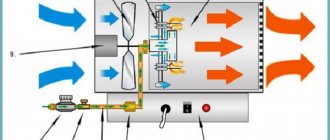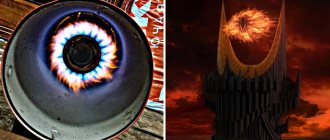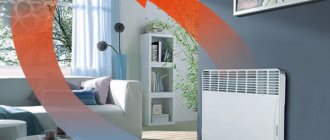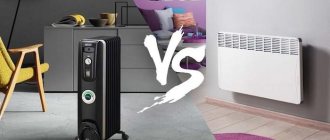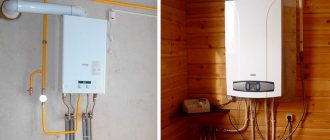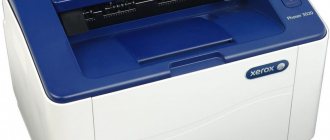Here you will learn:
- How do thermal curtains work?
- Purpose of thermal curtains
- Types of thermal curtains
- Advantages and disadvantages of thermal curtains
- Calculation of the thermal curtain
- Temperature management
- Choosing a thermal curtain - main criteria
- Most popular models
Dozens of heating devices have been developed to heat residential and non-residential premises, ranging from simple electric fireplaces with heating elements to powerful heat guns. They differ in their dimensions, performance and other technical characteristics, which greatly facilitates the selection of a suitable unit. A thermal curtain for a home is one of the heating devices described above. In some ways it resembles a heat gun, but plays a slightly different role - we will talk about this as part of our review.
In it we will look at:
- The operating principle of thermal curtains and their purpose;
- The main types of thermal curtains;
- Technical characteristics of the equipment;
- Additional options;
- The most popular models.
The review will be rich, there will be a lot of information.
How do thermal curtains work?
A thermal curtain is a heating device that generates a flow of warm air. For this purpose, a fan and a heating element are provided inside it. Some association with a fan heater suggests itself, and this is true, since these devices are structurally similar. They differ only in purpose, which will be discussed further. Otherwise, they have an identical device and serve to generate warm air.
If a conventional fan heater simply expels heated air masses into the room, heating it, then the thermal curtain performs a slightly different function. Its task is to create a descending air flow that prevents cold air from entering from the outside. This is true in entrance areas, where people often slam doors and bring cold into warm rooms. The thermal curtain, generating heat, mixes it with cold air masses and neutralizes their impact.
The operating principle of the unit itself is as simple as three kopecks. A fan installed inside captures cold air and forces it through the heating element, after which it is sent down. By opening doors, people drive cold air masses into the room, which subsequently enter the thermal curtain and heat up. It should be noted that the air temperature under the device itself is quite high; being in this area is not very comfortable.
A thermal curtain is a reliable and convenient device that provides high-quality protection from many adverse external factors.
Other features of thermal curtains:
- Provide protection against the penetration of insects - they are simply knocked down by tight air currents;
- These thermal heaters can work as conventional fans;
- Some curtains are equipped with an air filtration function, making the atmosphere in the house healthier;
- The presence of thermoregulation - if you choose a thermal curtain with a thermostat, it will regulate the air temperature in the heated area and save energy.
Now you know how a thermal curtain works and what it can do.
What is an air curtain. And why is it needed in the house?
An air (heat) curtain is a small rectangular device, similar in appearance to a radiator, which is mounted under the ceiling next to the door of the house. It is installed for one purpose - to blow hot air vertically downwards. Depending on the configuration and settings, the air curtain can use heated, cooled or regular air.
Why do you need a thermal curtain in your home? There are several benefits to using this solution.
- Thanks to air curtains, during the cold season the house becomes warmer due to the fact that there are fewer drafts;
- The thermal curtain makes it difficult for outside air to mix with indoor air, even when the door is open. Thanks to these devices, heat loss at home is reduced, which means heating costs (or cooling at home) are reduced;
- An air curtain improves air quality because, while preventing air from flowing outside, it also reduces the flow of dust, vapors or other pollutants, as well as insects that cannot break the air flow at that speed.
Purpose of thermal curtains
These units are used mainly in non-residential premises, but in houses they are much less common. The thing is that the vast majority of them are quite powerful units with high performance. But in houses and apartments such performance is simply not needed. For example, a thermal curtain with a power of 1 kW can drive through itself up to 300-400 cubic meters of air per hour - this is not relevant in residential premises.
Thermal curtains have found their application in commercial buildings - these can be shops, warehouses, production workshops. In a word, they are necessary where there is a large number of people passing through, often slamming doors. A typical example of this is any store - thousands of customers visit it every day, cooling the air in the sales area. The use of a thermal curtain will save accumulated heat.
If necessary, the thermal curtain can also be used in a residential building. If you actively use your personal yard in winter, then it will help keep warm in the hallway or at the back entrance. And by hanging it outside, near a place to relax, you can create excellent conditions for outdoor gatherings - in this case, you will need an infrared thermal curtain, silent and effective.
By the way, a thermal curtain with an infrared operating principle is also useful in residential premises - here it will play the role of a heating device. You just need to choose the right power. Such a heater is also useful in commercial premises - barns, garages, agricultural buildings and much more.
Reviews from customers of thermal curtains for the front door
Thanks to the fact that the Internet has firmly entered the life of a modern person, you can always use it if any questions arise. This could be an online consultation or reading user reviews about a model of a piece of equipment you like. Below are reviews from buyers of thermal curtains, the models of which are discussed in this article.
Review of the BALLU BHS-3.000SB model:
More details on Otzovik:
Review of the TROPIC M3 model:
More details on Otzovik:
Another review about the TROPIC M3 model:
More details on Otzovik:
Types of thermal curtains
When choosing a model, you should take into account the dimensions of your doorway. The width of the blown-out heat flow of the curtain should be wider than this indicator.
Next we will tell you what types of thermal curtains are. The most popular devices are horizontal. They are mounted above doorways and entrances and drive air from top to bottom. These are the ones we see in stores and shopping centers where there is a lot of foot traffic. The units differ in their size and performance, just like any other equipment.
Vertical thermal curtains are installed not on top of the doorway, but on its sides. There are two air flows here - one on the right and the other on the left. In terms of their efficiency, they are not much different from their horizontal counterparts, but they are more convenient for installation in rooms with low ceilings and high doors (when there is simply not enough free space above the doorways).
Built-in thermal curtains are the least common, as they have a high price. They are built into ceilings and are distinguished by their invisibility. This is relevant in rooms with designer renovations, but in most cases, hiding them is not required. Therefore, they are quite rare on sale.
We can also highlight several other types of thermal curtains. But they are unlikely to be suitable for heating houses. Here is their list:
- Infrared - most often used in shopping centers and enterprises where it is necessary to prevent cold from entering the premises without creating excessive noise;
- Water - in some ways they resemble in-floor convectors with forced convection. They are distinguished by their increased power and high productivity;
- Gas - these thermal curtains operate on natural or liquefied gas, but they cannot be called safe (like any gas equipment).
Of all this, only infrared devices can be used at home.
Water thermal curtains are most often powered by heating systems - inside them there are radiators blown by fans through which coolant flows.
How to choose a thermal curtain, what to look for
When choosing a thermal curtain, you need to pay attention to its technical characteristics - power, overall dimensions and performance, as well as:
- type and design of the heat exchanger - electric, water or without it;
- location and direction of air flows – vertically “bottom-up” or “top-down” and horizontally – in one-way or two-way direction;
- modes of use - can be constant or variable;
- air intake location - internal air of the room where the thermal curtain or external air is installed;
- availability of automation, control and protection systems;
- type of jet protection.
Control buttons for electric heat curtains for household use
Household models of air curtains are equipped with two (three) switches that turn on the heating elements and fan. In addition, such systems can be equipped with multi-stage regulators (power and heating speed), as well as built-in control units that operate remotely.
Jet protection is the protection of air flows, it can be:
- gate type – complete repulsion of outside air is carried out;
- mixing type - during operation, the outside air is partially passed through and mixed with the air inside the room, followed by heating.
Using a remote control unit, you can set the temperature and air flow
Advantages and disadvantages of thermal curtains
We will not take into account powerful industrial thermal curtains, but will pay attention to small-sized and low-power units powered by electricity. Let's look at their main pros and cons. Let's start with the positive features:
If the width of the passage exceeds the width of the air flow of the thermal curtain, then it makes sense to install two units side by side. Any gap in the coverage area greatly reduces the overall efficiency of the system.
- Compactness – despite all their performance, thermal curtains are small in size;
- High performance – thermal curtains can pass through a huge amount of air;
- Large selection of power - from 1-2 kW and above;
- Excellent reviews from customers - everyone who has ever encountered thermal curtains knows about their high efficiency;
- Reliable protection against the penetration of dust, smoke, exhaust gases and insects;
- The ability to work in the summer as fans with a very important function - in the summer they will prevent heat from penetrating into the premises.
There are also some disadvantages:
- High electricity consumption is typical for all heating electrical appliances;
- Noise – high-performance fans installed inside these devices are noticeably noisy, which creates difficulties for their use in residential buildings;
- The heating elements in these units burn oxygen - therefore, the premises must be ventilated.
Despite the tangible disadvantages, it is difficult to do without them.
Calculation of the thermal curtain
Let's talk about calculating a thermal curtain for a home. The main parameter is the height of its suspension - the required initial speed depends on it. The thing is that on the opposite side (near the floor, when installing equipment above the doors), the air flow speed should be 2-3 m/s. If this indicator is lower, then outside air will be able to penetrate into the room - the thermal curtain will only waste electricity. If the performance is too high, the heat will fly out.
At best, an incorrectly selected model may simply not give a positive result. And at worst, it can make the situation worse.
The initial speed directly depends on the working diameter of the fan. For example, with a diameter of 180 mm, the initial speed will be 15 m/sec. As for power, it all depends on the area of the room and performance.
When choosing equipment, we recommend focusing on two indicators - the permissible suspension height and performance. Equipment passports also indicate the maximum dimensions of heated doorways.
The optimal performance indicator for a doorway with a width of 800-1000 mm and a height of 2000-2200 mm is from 700 to 900 cubic meters. m/hour, power – 6 kW (a little more is possible). For a more accurate calculation of all indicators, we recommend using online calculators.
Operating principle of the thermal curtain and main technical characteristics
According to the principle of its operation, a thermal curtain resembles a heat fan, in which air flows passing through heating elements are heated and distributed in a given direction. A distinctive feature of the fan is the narrowly directed movement of strong air currents moving along the plane of the doors at which it is installed, creating an invisible barrier to outside air. The main technical characteristics on the basis of which such devices are selected are the following indicators:
- power – measured in kW, regardless of the type of curtain (electric or water);
- air capacity – measured in m3 per hour;
- installation height and location – determines the possibility of installation in a particular location, as well as the location of the curtain (vertical, horizontal);
- dimensions;
- weight.
The technical characteristics of such devices are interrelated: “power − installation height − overall dimensions”
Technical characteristics serve as the main criteria for selecting such devices, determining the location and type of installation, type of energy source and heating element.
Temperature management
Any heating equipment requires a temperature controller. Otherwise, it will consume too much electricity, clearly overheating the air in heated rooms. The simplest thermal curtains have built-in thermostats - they analyze the temperature of the intake air, turning the heating elements on and off.
Low-power thermal curtains for the home may be completely devoid of a thermostat - instead, step power regulators are installed here.
A remote thermostat for a thermal curtain is an element of much more powerful devices. It is an electronic or mechanical thermostat that controls the operating modes of the equipment. When the air overheats, it turns off the heating and only the fan runs. If the air cools too much, the thermostat turns on the heating element. There may also be controls for other functions.
Simple household thermal curtains use simple remote controls that operate via an infrared channel.
Choosing a thermal curtain - main criteria
Next, we will look at how to choose a thermal curtain. As we have already said, the first two indicators are suspension height and performance. It is also necessary to pay attention to the maximum dimensions of doorways. If the heater will be used as auxiliary heating of residential premises, its power should be 20-40 W per 1 sq. m. Here we can use any suitable models.
Having such a thermostat, you can remotely and accurately adjust the operation of the device.
We also pay attention to the way functions, temperature and performance are controlled. Units with remote controls – wired or wireless – are more convenient. Thanks to this, you can adjust the operating parameters of the equipment from a more convenient place. External thermostats are in most cases purchased separately.
The type of installation is determined individually - in home spaces where low-power thermal curtains are traditionally used, horizontal models are most often installed. As for vertical units, they are intended for use in commercial and industrial premises.
As for brands, here we recommend taking a closer look at foreign-made thermal curtains for your home. There are also some good domestic units on sale – as an example, let’s take heaters from the Tropic and Teplomash brands. We also pay attention to the following details:
- The ability to work as a fan - useful in the summer;
- The presence of a thermostat will ensure maintenance of the set temperature and save energy;
- The presence of overheating protection will protect the equipment;
- The noise level is a relevant parameter for home use, because the house should be quiet;
- Installation type: wall or ceiling.
The right choice will ensure reliable, stable and uninterrupted operation of the equipment.
You can get acquainted with the descriptions of certain models in our review - we will look at the most popular units. You can also look into the Yandex.Market product aggregator and select equipment that is suitable in terms of characteristics and cost through it.
The best thermal curtains price – quality
However, when purchasing thermal curtains, future owners do not always pay attention to the cost. For some, no less, and sometimes even more important, is greater functionality, increased power and simply ease of use. Here the combination of price and quality is already leaning towards the latter. So, it’s also worth listing several fairly expensive thermal curtains - perhaps the one that will be the best purchase for you belongs specifically to this category. Most of them not only have excellent characteristics, but are also produced by large, world-famous companies, which is also worth a lot.
Hyundai H-AT1-90-UI528
Perhaps the main advantages of this model are safety and power. Its maximum air exchange reaches 1170 cubic meters per hour. In this case, the power is 9 kW, but it can be reduced if desired. An additional advantage is the remote control - you don’t have to climb on a chair to turn on, turn off or adjust the high-mounted device. Now you can do this from anywhere in the room. If desired, you can turn it on in a no-heat mode, which is especially useful in the summer heat.
Thanks to its operation without heating, the thermal curtain creates a flow of cool air that does not allow heated air masses to enter the room. Particularly effective in combination with air conditioning in rooms where you have to leave doors or windows open.
Do not be afraid that the device will fail due to overheating - there is an automatic shutdown function specifically for such a case. It’s nice that with such outstanding characteristics, the thermal curtain weighs only 12.8 kg.
Advantages:
- simple installation;
- metal case;
- ideal for commercial premises;
- remote control;
- high power.
Flaws:
- requires connection to a three-phase network;
- quite noisy.
Ballu BHC-L08-T03
If you don’t know which curtain to choose so that it is powerful enough, not too noisy and economical, then it makes sense to take a closer look at this one. It has two power modes - 1500 and 3000 W, which makes it possible to choose the one suitable for a particular situation. The overheat shut-off feature dramatically reduces the risk of breakdown during long-term operation.
During operation, the noise level does not exceed 54 dB, which is a very good indicator. Dust and moisture protection corresponds to class IP20, like most analogues. The device can be installed at a height of up to 2.5 meters, even above the widest doors - its width is 82 cm. But the weight, despite its decent dimensions, is not too large - only 8.5 kg. In an hour, air exchange reaches 600 cubic meters.
Advantages:
- does not catch the eye, thanks to the successful design;
- works almost silently;
- convenient power adjustment;
- durable protective coating;
- safe to use.
Flaws:
- There is no remote control.
Zilon ZVV-1.0E6S
Perhaps this is one of the best thermal curtains in terms of quality and reliability. It is easy to use, safe and at the same time quite powerful, so it is impossible not to include it in the current rating. Convenience of operation is ensured by the remote control - now you can turn the curtain on and off or change its power at any convenient time - no need to climb on a chair to do this.
If the device overheats, it automatically turns off, so you don’t have to worry about damage. The needle heater has proven itself to be the most reliable - and this is what is used in this model. Finally, the heating power here is very high - 6000 W. So, winds, drafts and just cold don’t have the slightest chance. And the productivity is very good - as much as 680 cubic meters per hour of operation. Thanks to its width of 109 cm, the electric thermal curtain is perfect for spacious doors or small gates.
Advantages:
- equipped with a remote control;
- overheat protection;
- significant width;
- light weight.
Flaws:
- no light indication.
Timberk THC WS3 5M AERO II
Users who need a good thermal curtain that is highly reliable, safe and durable will definitely not be disappointed with this model. It boasts a multi-level protection system that protects against overheating, as well as an engine with an increased service life. So the device is guaranteed to last for many years. Additionally, it is worth noting the wear-resistant anti-corrosion coating.
For many potential buyers of a thermal curtain, an important advantage will be the fact that both horizontal and vertical installation is possible here - not all models are designed for this. When operating at full capacity, it demonstrates a power of 5000 W, but there is also a mode for only 2500 W. Air exchange is 500 cubic meters. in an hour. And with all this, the curtain weighs only 6.7 kg - very little for such impressive performance.
Advantages:
- durable body;
- engine with extended service life;
- modest energy consumption;
- ease of use;
- it is possible to install a coarse filter;
- possibility of vertical installation.
Flaws:
- no remote control.
Ballu BHC-B10T06-PS
Readers interested in what is the best thermal curtain to block drafts will definitely like this model. Its productivity is simply enormous - it passes 1100 cubic meters per hour. air. At the same time, it also warms it up well, thanks to a power of 6000 W. However, if it’s not too cold outside, you can run it in low mode – only 4000 W.
This electric curtain is suitable not only for residential premises, but also for warehouses and production workshops - it can be installed at a height of up to 3 meters with a door or gate width of 121 cm. Protection class IP21 allows you to ignore not only dust, but also small water splashes, which increases the service life of the equipment. In addition to all this, the model is also equipped with a remote control, which can be called a definite plus.
Advantages:
- there is a remote control;
- precise electronic thermostat;
- stylish appearance;
- solid heating power;
- huge air exchange;
- significant width.
Flaws:
- It's quite expensive.
Most popular models
If you are planning to buy a thermal curtain, you will find the information from our review useful. Let's take a look at the most rated devices and describe their technical characteristics.
Ballu BHC-L06-S03
The power of the thermal curtain is 3 kW, so this unit can be used for heating apartments and private houses.
The heater is also useful in technical and utility rooms - workshops, garages, outbuildings and much more. The price of the heater varies from 3.5 to 5 thousand rubles. The air curtain capacity is 350 cubic meters. m/hour, installation height – 2.5 m. Stepwise power adjustment is provided – 1500 or 3000 W at the choice of the consumer. The main advantage of this heater is its attractive design, which makes it possible to use it in residential buildings.
Teplomash KEV-2P1122E
When selecting a low-power thermal curtain, be sure to pay attention to this model. It is intended for use in private homes, utility and outbuildings, garages and small shops. Its power is 2 kW, productivity is 300 cubic meters. m/hour. The device is designed for horizontal wall installation at a height of 2.5 m. The control here is built-in, mechanical. Can be used as a simple fan. The noise level is only 45 dB - this is a fairly low-noise thermal curtain.
Tropic A-9
One of the simplest thermal curtains. The model is not intended for domestic use, as it is distinguished by high power and performance - 4.5 or 9 kW, 840 cubic meters. m/hour. It is possible to operate in simple fan mode. The fact that this device is not for the home is also indicated by its appearance - somewhat “clumsy” and angular. The maximum installation height for this model is 2.2 m. There are only two controls on board - a general switch and a power selection switch.
Free manufacturer consultation
Tropik-Line engineers are ready to answer your questions regarding non-standard use of equipment. We will help you draw up schemes in which thermal curtains are used both in a standard manner and as additional heating devices. Call the number or request a call back, write to or fill out the feedback form so that our specialist will contact you.
Air curtains Large selection of air curtains for commercial, industrial and domestic use.
Go to catalog


